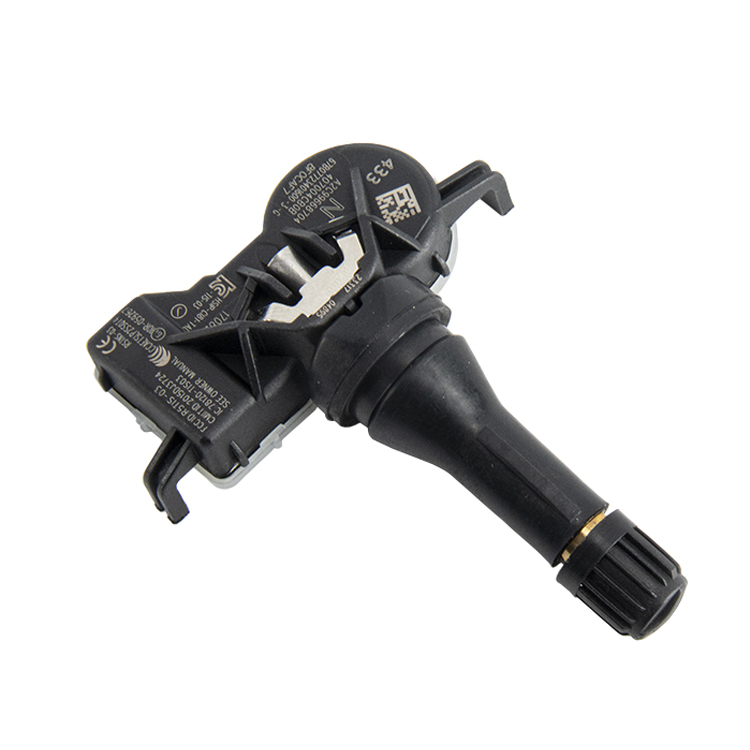Blog
DIY or Professional? Installing TPMS Sensors the Right Way
DIY or Professional? Installing TPMS Sensors the Right Way
When it comes to maintaining the health of your vehicle, few things are as important as your tires. Proper tire pressure is essential for safety, performance, and fuel efficiency. Tire Pressure Monitoring Systems (TPMS) have become an essential feature in modern vehicles, helping drivers stay informed about tire conditions and alerting them when pressure is too low or too high.
But what happens when the sensors in your TPMS system go bad or need replacement? Should you attempt to install new TPMS sensors yourself, or is it best to leave it to a professional? In this guide, we will explore both DIY and professional options for TPMS sensor installation, comparing the pros and cons of each approach, and offering helpful tips on ensuring the job is done right.
What is a TPMS Sensor?
Before we dive into installation methods, it’s important to understand what a TPMS sensor is and how it works. TPMS sensors are small devices installed inside or attached to your vehicle’s tires. They monitor the air pressure in each tire and send the data to the vehicle’s on-board computer system. If the pressure drops below a certain threshold, the TPMS triggers a warning light on your dashboard.
There are two main types of TPMS sensors:
- Direct TPMS Sensors: These sensors are mounted inside the tire and measure the air pressure directly. They send real-time data to the car’s onboard system.
- Indirect TPMS Sensors: These sensors do not measure pressure directly but instead monitor changes in wheel speed through the anti-lock braking system (ABS). Indirect TPMS systems are less common and are typically found in older vehicles.
Whether you’re dealing with a dead sensor, a damaged sensor, or a replacement need, the installation of new TPMS sensors can be a task that requires either a DIY approach or professional expertise.
DIY Installation of TPMS Sensors
If you’re an automotive enthusiast or enjoy tackling car maintenance projects, DIY installation of TPMS sensors can be a rewarding task. With the right tools and knowledge, it’s possible to replace or install these sensors yourself. However, there are several important factors to consider before you take this route.
Steps for DIY TPMS Sensor Installation:
- Tools Required:
- Tire removal tools (jack, lug wrench)
- TPMS sensor tools (sensor relearn tool, tire pressure gauge)
- New TPMS sensors
- Valve stems (if necessary)
- Torque wrench
- Remove the Tires:
- Safely jack up the vehicle and remove the tires. This will give you access to the inside of each tire where the sensors are located.
- Replace the Sensors:
- For direct TPMS, remove the existing sensors from the valve stems and replace them with new ones. Carefully install the new sensors, ensuring they’re tightly secured. Some sensors may require reprogramming, so follow the manufacturer’s instructions.
- Reinstall Tires and Reset System:
- Once the sensors are in place, carefully reinstall the tires and tighten the lug nuts using a torque wrench. Afterward, you’ll need to reset or reprogram the TPMS system to recognize the new sensors. Many vehicles require a specific “learn mode” procedure to sync the new sensors to the system.
- Check the TPMS Functionality:
- After completing the installation, verify that the TPMS system is functioning properly. Check the dashboard to ensure the TPMS light goes out once the system registers the new sensors and confirms the correct pressure.
Pros of DIY Installation:
- Cost-Effective: DIY installation can save you the labor costs of having a professional do the job.
- Satisfaction: Many car enthusiasts find the process of working on their vehicles personally rewarding.
- Learning Experience: Installing TPMS sensors gives you a chance to learn more about your vehicle and its components.
Cons of DIY Installation:
- Time-Consuming: Removing and installing tires, along with resetting the TPMS, can take several hours.
- Tools and Expertise: If you don’t already own the necessary tools or lack experience, you may find the installation more difficult and costly than expected.
- Potential for Errors: Incorrect installation could lead to sensor failure, inaccurate pressure readings, or damage to your tires or sensors.
Professional Installation of TPMS Sensors
If you’re not comfortable with DIY tasks or simply prefer to leave the job to an expert, having a professional install your TPMS sensors is a great option. Auto repair shops and tire specialists can quickly and efficiently install new sensors while ensuring that your TPMS system is calibrated correctly.
What to Expect During Professional Installation:
- Sensor Replacement:
- A technician will remove the old sensors, inspect your tires, and replace the sensors with new ones. They may also inspect the valve stems and replace them if necessary.
- System Calibration:
- After the new sensors are installed, the technician will use a TPMS scan tool to reset and recalibrate the system. This ensures that the sensors are synced with your vehicle’s onboard system and that the correct tire pressures are monitored.
- Pressure Check:
- The professional will also ensure that the tire pressures are correct and consistent with the manufacturer’s recommendations, avoiding issues with overinflation or underinflation.
- Testing and Verification:
- The final step in professional installation is to test the system. After resetting, the technician will check the TPMS light to make sure it turns off and verify that the system is reading tire pressures accurately.
Pros of Professional Installation:
- Expertise: Professionals have the knowledge and experience to ensure that the job is done correctly.
- Accuracy: Professional installation guarantees that your TPMS system is properly calibrated and functioning as it should.
- Time-Saving: Professional installation is usually quicker and less stressful, as the technician will take care of everything.
- Warranty and Support: Many professionals offer warranties on their work and provide post-installation support if issues arise.
Cons of Professional Installation:
- Cost: The primary downside is the cost, as you’ll be paying for both the sensors and the technician’s labor.
- Less Personal Satisfaction: If you enjoy working on your own vehicle, professional installation may feel like a missed opportunity for hands-on experience.

Which Option is Right for You?
The decision between DIY and professional installation largely depends on your comfort level with automotive repairs, your available time, and your budget.
Consider DIY if:
- You have experience working on vehicles and the necessary tools.
- You are looking to save money on labor costs.
- You enjoy learning more about your car and prefer hands-on tasks.
Consider Professional Installation if:
- You’re unsure about the process or lack the tools or experience.
- You want to ensure the installation is done correctly and without hassle.
- You have limited time and prefer a quicker, more reliable solution.

Conclusion: Installing TPMS Sensors the Right Way
Whether you choose to install TPMS sensors yourself or rely on a professional, the key is to ensure the job is done correctly. Properly installed and calibrated TPMS sensors can prevent costly repairs, enhance your vehicle’s safety, and improve fuel efficiency by keeping your tires properly inflated.
If you decide to go the DIY route, take your time and follow all instructions carefully to avoid costly mistakes. However, if you’re not comfortable handling the installation on your own, seeking the help of a professional can provide peace of mind and ensure that your vehicle’s TPMS is working perfectly.


